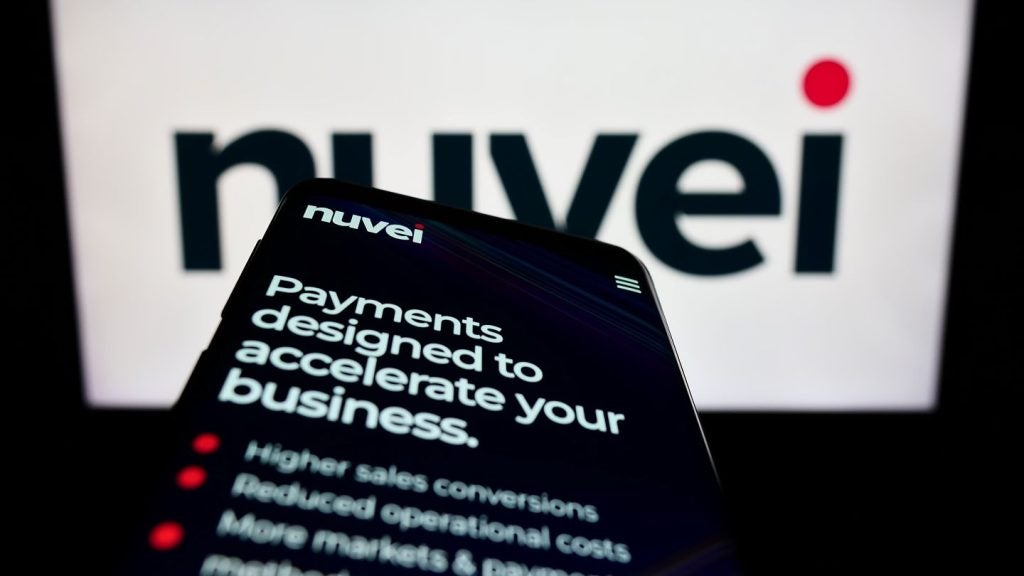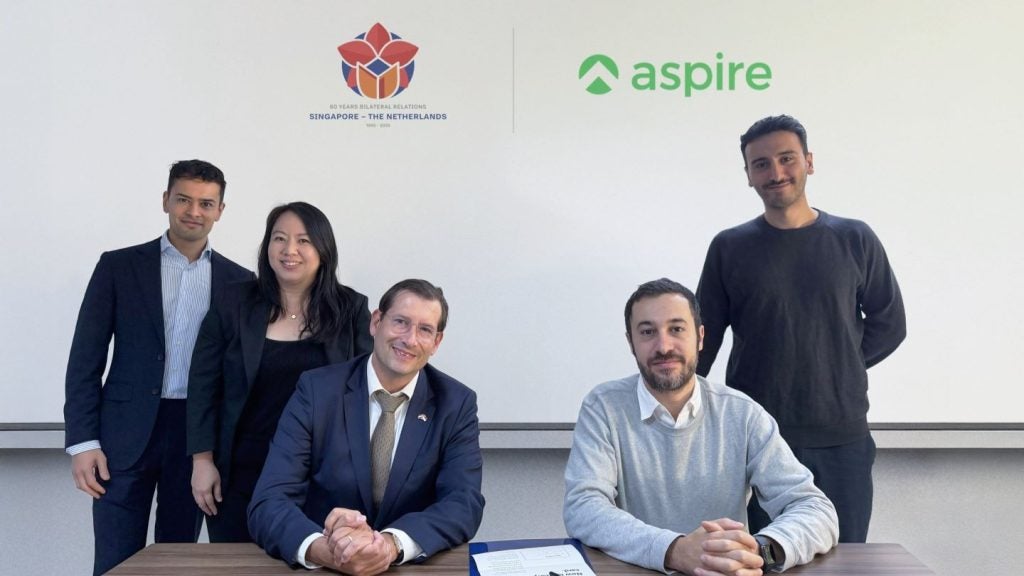Mobile banking is the focus of much attention and is attracting
a host of newcomers to the ranks of mobile technology vendors.
However, few can match the experience of Fundamo, a mobile banking
technology developer that cut its teeth in Africa and is
successfully taking its solution to the international market.
Mobile phone-based banking and payments are high on agendas of
many banks and mobile service carriers and have spawned a host of
technology vendors eager to supply them with a mobile payments
solution. However, in this dynamic market few can match the
experience or enthusiasm of Hannes van Rensburg, CEO of South
African mobile banking technology developer Fundamo.

Access deeper industry intelligence
Experience unmatched clarity with a single platform that combines unique data, AI, and human expertise.
Van Rensburg confidently lays claim to Fundamo being one of the
foremost mobile banking software developers. “We are the largest in
the world in terms of sales, staff and clients,” he told EPI.
Backing his claim is a team of100 development engineers at
Fundamo’s Cape Town head quarters and deployments of its solution
in 20 countries, with many more in the pipeline.
Pioneering history
Fundamo, which can undoubtedly lay claim to having been a pioneer
in the evolution of mobile payment technology, is a tribute to
enthusiasm for innovation of an unlikely person, an actuary, the
late Marinus Daling.
In 1999 Daling, then executive chairman of South Africa’s
second-largest life insurance company, Sanlam, approached van
Rensburg with a vision of developing cutting-edge electronic
commerce technology. Van Rensburg, then Sanlam’s chief information
officer, set about the task and emerged with the concept of mobile
banking. “It was regarded as madness at the time,” quipped van
Rensburg.

US Tariffs are shifting - will you react or anticipate?
Don’t let policy changes catch you off guard. Stay proactive with real-time data and expert analysis.
By GlobalDataUndaunted, van Rensburg and his Sanlam team had by 2000
developed a fully functional mobile banking solution. That same
year, Fundamo was founded with Sanlam as its primary backer. In
addition to management and Sanlam, Fundamo’s shareholders are today
South African private investment company Venfin and South African
entrepreneur Mark Shuttleworth’s HBD Venture Capital.
In the original Fundamo prototype, its developers opted to use
short message service (SMS), rejecting wireless application
protocol (WAP) as not offering sufficient security. “It was a bold
decision as only about 20 percent of mobiles could send SMS at that
stage,” said van Rensburg. He added that WAP security levels have
been substantially enhanced and today Fundamo can be run as a WAP,
SMS, SIM card, Java, unstructured supplementary services data,
extensible hypertext mark-up language or interactive voice response
application. Fundamo also offers full interoperability across
mobile operators, banks and switches.
He continued that WAP security levels have been substantially
enhanced and today Fundamo can be run as a WAP, SMS, phone SIM
card, Java, unstructured supplementary services data, extensible
hypertext mark-up language or interactive voice response
application. Fundamo also offers full interoperability across
mobile operators, banks, switches and other Fundamo
deployments.
Big breakthrough
Though the first pilot project using Fundamo’s platform was
launched in 2000 in conjunction with now-defunct South African bank
Boland, Fundamo’s big breakthrough came in 2001. However, it was
not in its home country, but in Zambia, where Africa’s
third-largest mobile network operator (MNO) Celtel selected Fundamo
as the platform for its first (and one of the world’s first) mobile
banking initiative to be implemented on behalf of a number of
banks. Celpay, which was acquired by South African bank FirstRand
in 2005, extended its service to the Democratic Republic of
Congo.
From the start, Celpay offered a full, advanced functional
transactional service with mobile applications including bill
payments, person-to-person payments and airtime purchases.
Inter-bank transfers were added in 2006. Celpay has also found
strong acceptance among merchants as a means of paying for goods
delivered to them. Payments of up to about $60,000 are made via
Celpay, said van Rensburg.
Fundamo’s first South African deployment came into operation in
2005 following its selection by the Standard Bank of South Africa
and South African MNO MTN as the platform for their mobile banking
joint venture, MTN Banking. Although the venture was slow to take
off, adjustments to MTN Banking’s distribution strategy have
resulted in a strong uptake of the service that, said van Rensburg,
has “many hundreds of thousands of customers” and is gaining about
1,000 new users daily.
In addition to full transactional banking functions, the MTN
Banking service provides users with the ability to switch credit
cards on and off and to change their ATM PIN via their mobile
device. Backing MTN Banking’s distribution effort, the application
is preloaded on all new MTN SIM cards.
Notably, Fundamo is the preferred mobile banking-enabled SIM
card supplier to Netherlands vendor of digital security products
Gemalto. According to van Rensburg, Gemalto has a about a 50
percent share of the world’s SIM card market.
Recognition of superiority
Selection as the platform for the high-profile MTN Banking service
brought Fundamo’s technology to the fore. Significant recognition
came in 2006 when Frost & Sullivan bestowed on Fundamo its
Technology Leadership Award. According to the US consultancy, the
award requires a recipient to demonstrate superiority in technology
leadership by excelling in all aspects of the technological life
cycle within its industry.
Speaking at the award ceremony in 2006, Frost & Sullivan
smart card analyst Lindsey McDonald said: “Fundamo’s products have
extended the prospect of mobile banking to a larger number of South
Africans and are enabling African countries to be among the most
innovative when it comes to mobile banking. This has great
applicability in the global markets where the company is headed
next.”
And indeed, Fundamo’s ambitions are now global as it finds
itself in a domestic market that is among the world’s best served
by mobile banking services. In addition to the four biggest banks –
Standard, FirstNational, Absa and Nedbank – mobile banking is
offered by Investec Private Bank, Capitec (a micro-lending
specialist) and Wizzit Bank.
A notable application of mobile banking, Wizzit was launched in
2005 as the first local bank focused on servicing the unbanked. A
2006 study undertaken by Finmark Trust, a non-profit organisation,
noted that Wizzit had already created a “cult following” among its
fast-growing user base.
For van Rensburg, the uptake of mobile banking in South Africa
indicates the huge potential for growth worldwide. “Internet
banking has been in South Africa for ten years and it took eight
years to reach the 1 million user mark. Mobile banking reached that
user level in 18 months,” said van Rensburg. Internet and mobile
banking now have a total of about 1.5 million users each, he added.
According to Finmark Trust, 15.9 million South Africans had a bank
account at the end of 2006.
In its global expansion drive, Fundamo’s emphasises its marketing
material with phrases such as “Our technology is proven. Your
venture won’t be a test case.” Many industry newcomers can hardly
claim that.
Of the proliferating number of mobile banking/payments technology
vendors, van Rensburg had particular praise for those in Korea and
Philippines “They’ve done some good stuff,” he stressed. Of some
newcomers his view is cautious: in the eight years Fundamo has been
developing and enhancing its system “we have come across and had to
solve problems that many newcomers to the industry do not realise
still awaits them”, he said. For example, he explained that when
platforms move towards processing even as few as ten to 20
transactions per second, unexpected complications often occur. Some
of Fundamo’s installations are processing 1,000 transactions per
second, he added.
High-profile partners
The need for experience and proven mobile banking technology has
been highlighted by a number of high-profile partners garnered by
Fundamo. Among them is mobile phone operator body the GSM
Association (GSMA), that in 2007 selected Fundamo and technology
consultancy and outsourcing services provider Accenture to deploy
the platform for the its Market Acceleration Programme (MAP), a
particularly ambitious mobile banking project.
In essence, the MAP was established to help accelerate the
introduction of mobile financial services – what the GSMA terms
mWallets – by MNOs. In 2008 the MAP pilot project is open to 20 of
the GSMA’s 700 member MNOs and will enable them to offer up to
1,000 customers a fully functional mWallet for up to six
months.
In a statement, the GSMA noted: “Through market research, surveys
and interviews, the GSMA identified Fundamo as among best of breed
mobile remittance and banking platform for global MNOs.”
Underscoring this, Fundamo has been selected as the platform to be
used by the world’s largest money transfer service provider,
Western Union, to establish a global mobile phone-based remittance
services. “We have a very strong relationship with Western Union,”
said van Rensburg.
In late 2007 Western Union teamed up with the GSMA to create what
could potentially become one of the world’s most significant money
transfer services. The objective is to create an affordable service
that will enable consumers to send and receive low-denomination,
high-frequency money transfers using their mobile phones, opening
up what GSMA CEO Rob Conway termed “a potentially vast market for
financial services”.
The mobile money transfer service will enable consumers to use
mWallets to undertake person-to-person money transfers over Western
Union’s cross-border remittance network and also offer
cash-to-mobile and mobile-to-cash transactions via its network of
312,000 agent locations in 200 countries. The first deployment of
the service is due in the second quarter of 2008.
“Western Union’s vast network of agents make them highly relevant
player in the developing mobile payments market,” said van
Rensburg. “You can send money via a mobile phone but there has to
be somewhere for recipients to collect it.”
Indicative of the potential of the GSMA’s and Western Union’s
projects, a study undertaken by consultancy Edgar, Dunn & Co.
for the GSMA estimates that globally the number of mWallets in use
could rise from10 million at the end of 2007 to 400 million in
2010.
A number of other mobile banking initiatives involving Fundamo are
nearing fruition. In Africa it is busy with projects in nine
countries, while in the Middle East “there is a big project
coming”, said van Rensburg.
Whether these projects involve MTN is unknown, but as the largest
MNO in Africa and a fast-growing player in the Middle East, MTN
appears to offer significant potential. According to MTN, it has
operations in 16 African countries and in four Middle Eastern
countries, including the virtually unbanked Iran where its
subscriber numbers grew from 154,000 at the end of 2006 to 6
million at the end of 2007. In total, MTN, which has stated that
mobile banking is crucial to its strategy, has 61.4 million
subscribers, 34.6 million of whom are in Africa, excluding South
Africa.
Moving into the Americas
US banking systems developer S1 last year selected Fundamo to
supply the technology for its mobile banking offering. S1 is one of
the world’s biggest suppliers of internet banking solutions, said
van Rensburg.
In February this year, Fundamo entered into an agreement with
Brazilian import-export company BSI Technologia that will enable
the latter’s BSI-Brazil unit to distribute Fundamo’s systems in
Brazil. “BSI has extensive experience in bringing third-party
software into Brazil,” said van Rensburg.
In addition to mobile banking’s ability to provide convenient
services to the unbanked and banked, van Rensburg stressed the
security aspect. Implemented correctly, there is “no doubt” that
mobile banking is more secure than internet banking, he said. In
Fundamo’s application, he explained, the mobile phone acts only as
the PIN entry device and all data is stored in the service
supplier’s back office. Among security measures implemented when
undertaking a transaction, all messages are encrypted on the phone
using encryption keys stored on the SIM and then compressed and
encrypted a second time when transmitted via a GSM network.
van Rensburg also took issue with a report published by the US
Department of State (DoS) in which it asserted that mobile banking
was open to abuse by money launderers and terrorists. (see
“M-banking gives Department of State the jitters”). “I totally
disagree with the State Department,” he stressed.
In a comment published by van Rensburg on the internet, he wrote:
“Sentiments expressed and the conclusions reached [by the DoS] are
far removed from the practices or the intention of the mobile
payment and remittance industry. Very few of the statements
regarding risks and lack of controls have been verified or tested
against the existing practices employed by mobile payment
vendors.
“Most of the vendors in the industry, and I know most, have a
genuine intent to build an accessible electronic financial
infrastructure for the poor that will also eliminate and block the
actions of criminals and terrorists.”
He added the DoS’s report harms delivery of financial services
worldwide and delays deployment of electronic tools that would
enable agencies to monitor transactions and to identify fraudulent
and illegal activities.
However, despite obstacles such as the DoS report, van Rensburg
believes mobile banking is unstoppable. “People who don’t believe
mobile banking will take off have their eyes shut. It will pass
them by,” said van Rensburg.






